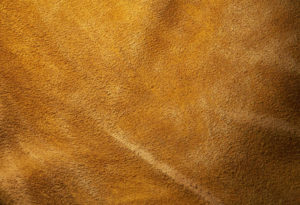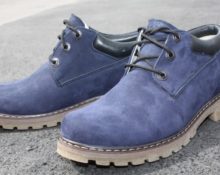 Boots made of natural suede look very attractive and luxurious. But this material is not always affordable for us. Thus, artificial suede and nubuck appeared on the consumer market. Well, both materials have a right to exist. Let's figure out the difference between them, as well as the advantages and disadvantages of each.
Boots made of natural suede look very attractive and luxurious. But this material is not always affordable for us. Thus, artificial suede and nubuck appeared on the consumer market. Well, both materials have a right to exist. Let's figure out the difference between them, as well as the advantages and disadvantages of each.
What to choose for shoes: nubuck or suede

These materials are used not only for making shoes, but mainly in this field. They are very similar both in characteristics and in appearance, but still have differences. To understand what is best to choose for shoes, you must first understand the features of each of them.
Features, advantages and disadvantages of suede
 Suede is a type of leather. It is made from the skin of large horned animals, mainly elk or deer, using fat tanning. It belongs to expensive types of tanned leather. Its main advantages are:
Suede is a type of leather. It is made from the skin of large horned animals, mainly elk or deer, using fat tanning. It belongs to expensive types of tanned leather. Its main advantages are:
- chic appearance;
- presentable even in shabby condition;
- durability.
 You can't argue with the beautiful appearance of the material. Also, its advantage lies in the versatility of its appearance, since shoes or boots made of this material will suit almost any look.
You can't argue with the beautiful appearance of the material. Also, its advantage lies in the versatility of its appearance, since shoes or boots made of this material will suit almost any look.
But this material, like any other, has its flaws. These include the following:
- poor moisture tolerance;
- require special care;
- high price.
It is better not to wear this material in wet weather, much less step in mud. Therefore, suede shoes will be a more rational choice than boots.
It is worth noting that we are talking about natural suede; artificial analogues have slightly different characteristics.
Features, advantages and disadvantages of nubuck
 Nubuck is also a type of leather. It is made from the leather of cattle, mainly domestic, using chrome tanning. This is the main difference in the manufacturing method. As for characteristics, nubuck is more elastic and moisture resistant than suede. Also, one of the main visual differences is the length of the pile: suede has it longer.
Nubuck is also a type of leather. It is made from the leather of cattle, mainly domestic, using chrome tanning. This is the main difference in the manufacturing method. As for characteristics, nubuck is more elastic and moisture resistant than suede. Also, one of the main visual differences is the length of the pile: suede has it longer.
Among the advantages of the material we highlight:
- high strength;
- excellent breathability;
- tolerates low temperatures well.
 In comparison with suede, several more advantages can be identified: higher moisture resistance and lower price. But this is only in a comparative aspect; nubuck also does not like moisture.
In comparison with suede, several more advantages can be identified: higher moisture resistance and lower price. But this is only in a comparative aspect; nubuck also does not like moisture.
In general, nubuck also does not tolerate high humidity and requires special care.
What material is better to choose for shoes depending on the season?
Both presented materials are used in the manufacture of shoes for any season. And in view of the differences presented, let's figure out what to choose for winter, autumn and spring, and what for summer.
 Winter. For winter, nubuck is the best option. It tolerates low temperatures better.It also shows less visible stains from salt and sand that are sprinkled on roads in winter. But still do not forget about proper care.
Winter. For winter, nubuck is the best option. It tolerates low temperatures better.It also shows less visible stains from salt and sand that are sprinkled on roads in winter. But still do not forget about proper care.- Autumn. This season is especially rainy and there is a lot of dirt on the roads, even in large asphalt cities. Therefore, it is generally undesirable to choose shoes made from these materials for autumn.
- Spring. Such shoes are also not suitable for early spring, but for the middle and end of the period they are quite suitable. Suede shoes are especially popular. But, if you want a more budget option, choose nubuck.
- Summer. For summer shoes, it is better to choose nubuck, as it has high ventilation and your feet will not sweat. But suede shoes are no less popular during this period.
We hope now you have no doubts about the choice of material. You can safely go shopping!


 Winter. For winter, nubuck is the best option. It tolerates low temperatures better.It also shows less visible stains from salt and sand that are sprinkled on roads in winter. But still do not forget about proper care.
Winter. For winter, nubuck is the best option. It tolerates low temperatures better.It also shows less visible stains from salt and sand that are sprinkled on roads in winter. But still do not forget about proper care. 0
0





